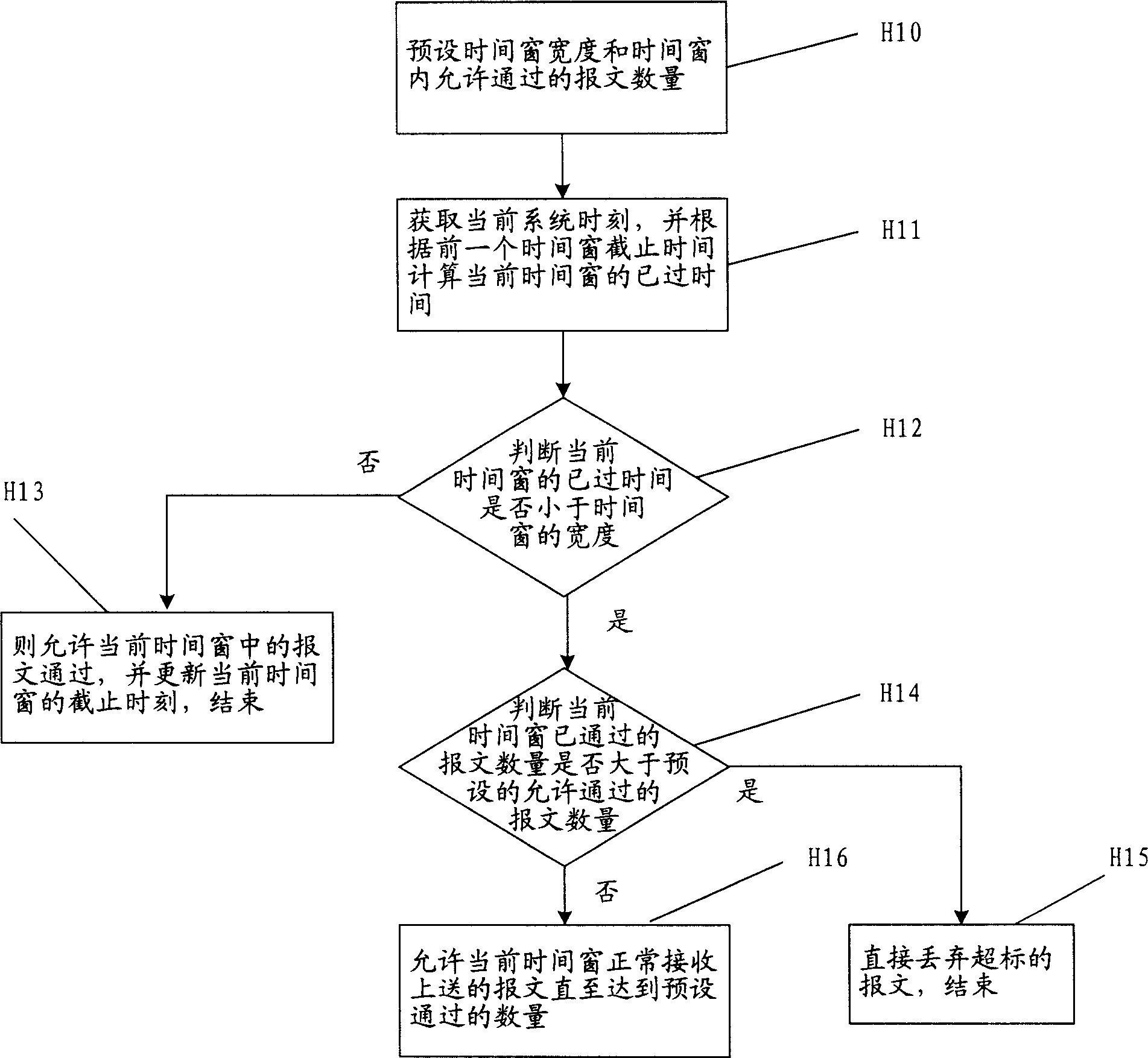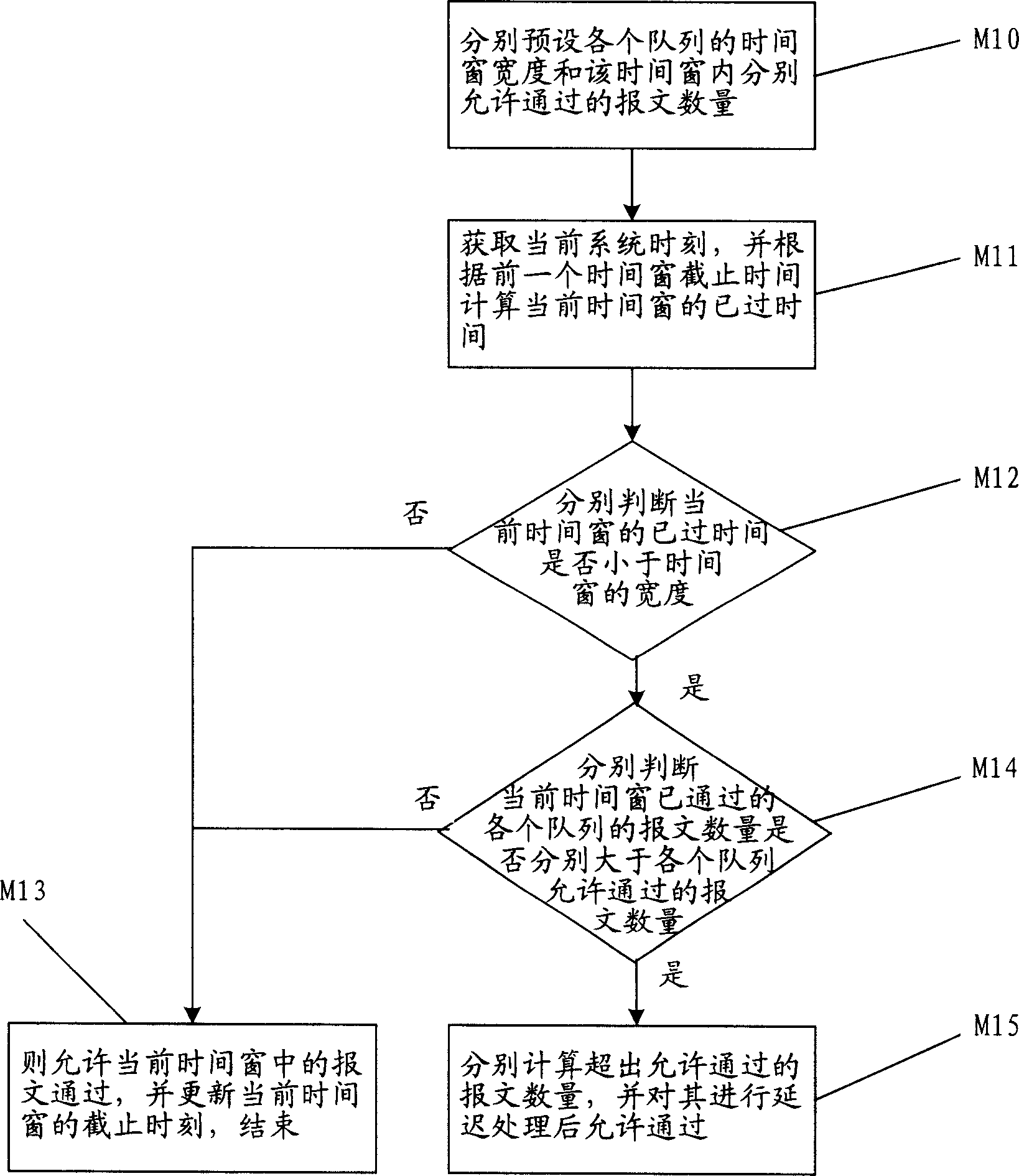Message speed limit method
A message and message limit technology, applied in the field of message processing, to achieve the effect of simple implementation, less resource occupation, and basically stable quantity
- Summary
- Abstract
- Description
- Claims
- Application Information
AI Technical Summary
Problems solved by technology
Method used
Image
Examples
Embodiment Construction
[0048] The core of the present invention is to control the flow of messages received by the CPU by setting the flow of messages passing through the time window, and adopt a corresponding punishment mechanism for messages exceeding the unit time window, that is, delay processing, so as to ensure The number of packets sent is basically stable, so as to optimize the use of CPU resources and protect the CPU when the system is attacked by broadcast storms or hackers.
[0049] The invention provides a general and convenient method for limiting the speed of messages. The method uses software means to limit the flow rate or shape the flow of CPU messages sent to the CPU, and is applicable to various types of CPUs and software operating systems. The technical scheme of the invention will be further described below by taking the realization on the embedded operating system Vxworks as an example.
[0050] Please refer to figure 1 , is the flow chart of the message rate limiting method o...
PUM
 Login to View More
Login to View More Abstract
Description
Claims
Application Information
 Login to View More
Login to View More - R&D
- Intellectual Property
- Life Sciences
- Materials
- Tech Scout
- Unparalleled Data Quality
- Higher Quality Content
- 60% Fewer Hallucinations
Browse by: Latest US Patents, China's latest patents, Technical Efficacy Thesaurus, Application Domain, Technology Topic, Popular Technical Reports.
© 2025 PatSnap. All rights reserved.Legal|Privacy policy|Modern Slavery Act Transparency Statement|Sitemap|About US| Contact US: help@patsnap.com



